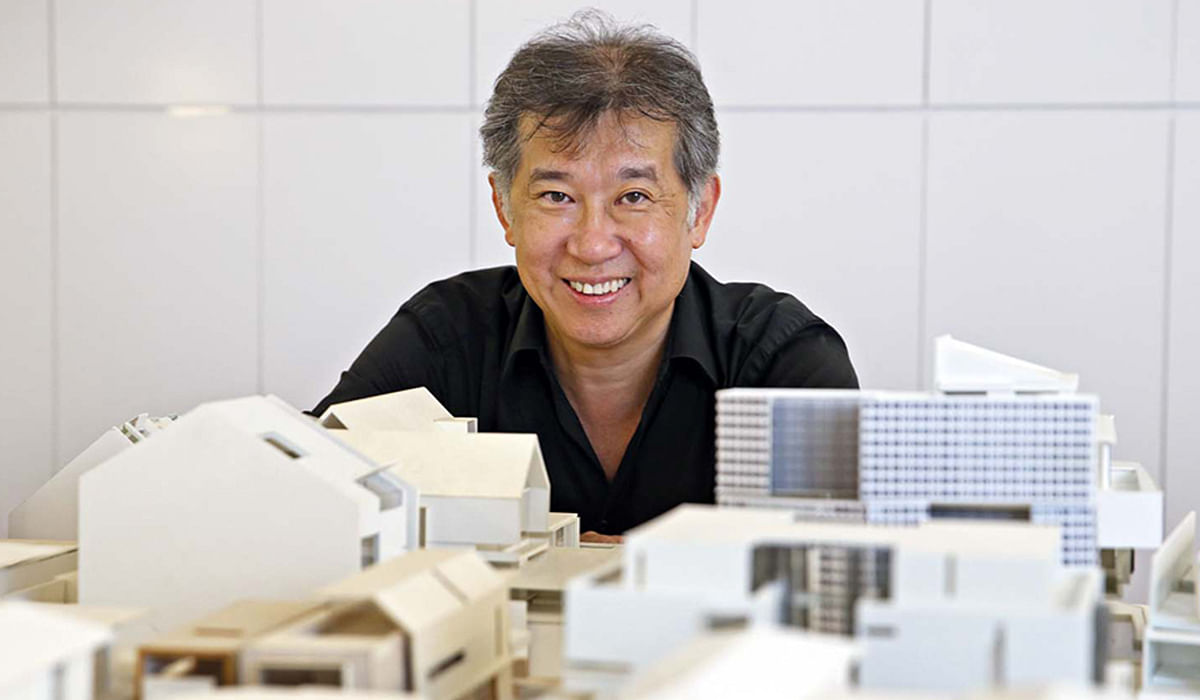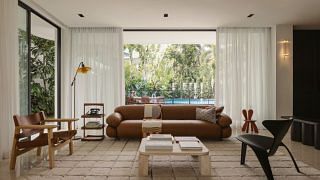Having designed more than 130 exquisite houses in Singapore and the Southeast Asian region, it is fair to say that award-winning RT+Q Architects is an authority on domestic luxury. We asked firm co-founder Rene Tan to share more about what constitutes luxury these days.
How has the notion of luxury changed today?
Covid has contributed to the way we view luxury. Before Covid, luxury means having the ability to acquire things and the resources to travel and indulge, whether in food, accommodation, or entertainment.
The notion has shifted a little today. We have learned to value and appreciate things that are not traditionally associated with luxuriousness. For instance, in our field of residential design, luxury used to be associated with maximising the space that you have. If the maximum buildable area is 40 per cent of the site, then we build that 40 per cent.
Today, the emphasis is no longer on maximisation, but optimisation. Suppose it turns out that building 32 per cent is already optimum to cater to all the client’s requirements. In that case, we leave the design at 32 per cent and focus on optimising the other aspect of the product, like maybe designing a bigger garden or a more spacious outdoors.
Do you notice a shift in the homeowner’s preference?
Not really. The shift is more on how we design because we are the ones who translate the client’s needs into tangible spaces. Because of Covid, we have put more emphasis on flexibility in spaces. For instance, your living room can suddenly turn into an office, and some days, your study needs to accommodate three people instead of one.
So we approach our design with more flexibility in mind. One way to do this is by paying more attention to the cabinetry. Often it is used as storage and fillers in a space, but today we give the cabinetry a space-defining role.
For example, as a design element that defines the boundary between the kitchen and the dining room, thus playing an important role in lending more spatial flexibility.
(Related: Luxury homes: A classic Parisian home transformed with charm and subtle elegance)
Has the appreciation of materials also shifted?
Absolutely. These days everyone is talking about sustainable materials –they are important.
It’s no longer about obtaining the most precious, exotic materials, like, say, Makassar ebony, which sometimes could be difficult to obtain. Today, we favour engineered and recyclable materials – those with transparent origins and were made with less wastage and easier to care for.
I practice this in my own house, which I privately called the House of Alternatives. Because the timber I used for it is reconstituted wood, and the steel surface is created with tiles. I used many of the materials and elements that we had proposed to and rejected by the clients.
It’s interesting that you championed these substitute materials because luxury homes have always been a proponent of material honesty – timber must be solid wood, the marble must be natural, for example.
It’s because our relationship with nature has changed and we are now more sensitive to our environment. It can no longer be exploitative.
Yes, there is sustainably farmed timber, but most of the time, you have to destroy forests to get solid wood, and deface a chunk of the mountain to get natural stones, and there will be ecological consequences.
Thus, the material industry has come up with sustainable alternatives, if not outright substitutes.
(Related: Luxury homes: a sensitive renewal of a ’70s inter-terrace home in Joo Chiat)
What’s your current favourite substitute material?
Homogeneous tiles. Thirty years ago, people would avoid this material because they didn’t look very nice. But today? Many of them look fantastic and feel good to the touch.
Forget whether they can convincingly fool you to think of them as wood or metal – that is not the correct mindset. Ultimately, if they look and feel perfect for your space, just use them.
You don’t want to indirectly contribute to more destruction of our environment. Substitute materials is an excellent way to build with.
What constitutes luxury to you, personally?
I have a lighter view of architecture these days. By that, I mean I place more importance on proportion, scale and the management of spaces rather than how noble the materials inside the space are.
In my semi-detached home, I use laminates for the carpentry. We rarely use wood veneers anymore because they are expensive and not as durable as laminates, which are also labour-efficient to install and maintain. For me, luxury is defined by how we live and how we move inside a space.
For instance, we try to design less dead-ends and more fluid spaces to foster a feeling of boundlessness. I hope to redefine the idea of luxury in my own home by elevating the mundane areas like the wet kitchen and the storage spaces. The wet kitchen used to be relegated near the yard because of the fumes, but in my house, the wet kitchen is brought into the social zone and occupies the largest space.
Storage spaces are also celebrated. My wife and daughter not only have a walk-in wardrobe, but they also have a walk-in bag ‘baptistry’ and a walk-in shoe ‘sacristy’ They are luxurious not because they are finished with premium materials, but because of how we experience them and how we can store, find, identify, and display our possessions effortlessly and beautifully.
This article was originally published in Home & Decor.
(Related: How to get the subtle neo-classic look right)







